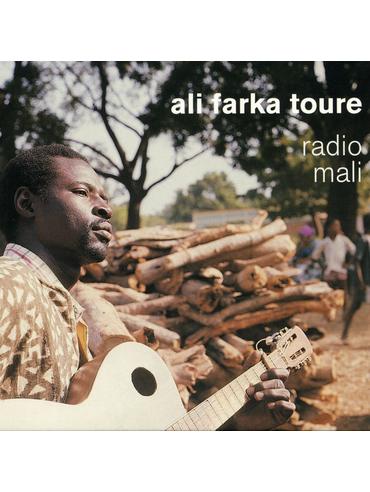Radio Mali - Ali Farka Toure
Titel : Radio Mali
Artiest(en) : Ali Farka Toure
Genre : African
Medium : CD
Jaar : 1996
Label : World Circuit
€ 15,99
Radio Mali (1996) is an album by Ali Farka Touré, consisting of remastered selections from several earlier albums originally recorded between 1975 and 1980
1. Njarka (0:43)
2. Yer Mali Gakoyoyo (4:47)
3. Soko (5:06)
4. Bandalabourou (6:41)
5. Machengoidi (2:41)
6. Samariya (5:27)
7. Hani (4:20)
8. Gambari (6:24)
9. (Njarka) Gambari (3:21)
10. Biennal (5:09)
11. Arsani (5:16)
12. Amadinin (7:08)
13. Seygalare (5:10)
14. Terei Kongo (6:08)
15. Radio Mali (2:43)
16. Njarka (1:02)
One of the most internationally successful West African musicians of the last decade, guitarist and singer Ali Farka Toure was approaching the age of 50 when his self-titled album came to the attention of the world music audience in the late `80s. Since then, he`s toured in North America and Europe and recorded with artists such as Taj Mahal and members of the Chieftains. But it was his Grammy-winning 1994 collaboration with Ry Cooder, "Talking Timbuktu," that won him on a larger scale. Inspired by African rhythmic and musical traditions extending back for generations, this album features materials originally recorded for broadcast on Radio Mali from 1970-78, and loaned by the station`s archive. It was these tapes that introduced Toure`s unique guitar style to the attention of his countrymen. Once available in France on vinyl, these were among the very first commercial records of Malian music.
Previously available as a 1996 import on the World Circuit label, this nearly 72-minute collection of recordings were originally made for radio broadcast between 1970 and 1978. As a single collection, this is the finest yet of Toure`s slow-burning music, characterized by nimble, expressive guitar playing and strong, expressive singing. Lyrically, the songs are mostly devotionals, praising a loved one, Allah, and various government initiatives (including Radio Mali itself). Half the tunes feature Toure alone on guitar and vocals; elsewhere he is backed by the ngoni`s beautiful rattle-buzz, a full choir, a smattering of percussion, and a violin player whose sliding, high-pitched notes echo the fiddle playing of Appalachia. Throughout, Toure`s singing has a wider range than you`d expect (considering that he`s known as the "African John Lee Hooker") and his bluesy guitar playing is always melodic, modal, and meditative. Toure repeats musical phrases over and over again, subtly changing them. But he never gets fancy for its own sake--his style (which adapts Sonrai, Peul, and Tamascheq techniques) sounds as natural as a babbling brook. Strands of sing-songy, seemingly simplistic melodies wrap around each other, coming together and unwinding like strands of RNA. This is some mind-blowing stuff.
Previously available as a 1996 import on the World Circuit label, this nearly 72-minute collection of recordings were originally made for radio broadcast between 1970 and 1978. As a single collection, this is the finest yet of Toure`s slow-burning music, characterized by nimble, expressive guitar playing and strong, expressive singing. Lyrically, the songs are mostly devotionals, praising a loved one, Allah, and various government initiatives (including Radio Mali itself). Half the tunes feature Toure alone on guitar and vocals; elsewhere he is backed by the ngoni`s beautiful rattle-buzz, a full choir, a smattering of percussion, and a violin player whose sliding, high-pitched notes echo the fiddle playing of Appalachia. Throughout, Toure`s singing has a wider range than you`d expect (considering that he`s known as the "African John Lee Hooker") and his bluesy guitar playing is always melodic, modal, and meditative. Toure repeats musical phrases over and over again, subtly changing them. But he never gets fancy for its own sake--his style (which adapts Sonrai, Peul, and Tamascheq techniques) sounds as natural as a babbling brook. Strands of sing-songy, seemingly simplistic melodies wrap around each other, coming together and unwinding like strands of RNA. This is some mind-blowing stuff.

© 2015 Most Wanted Latin Music. Alle rechten voorbehouden.
By BizzServices




